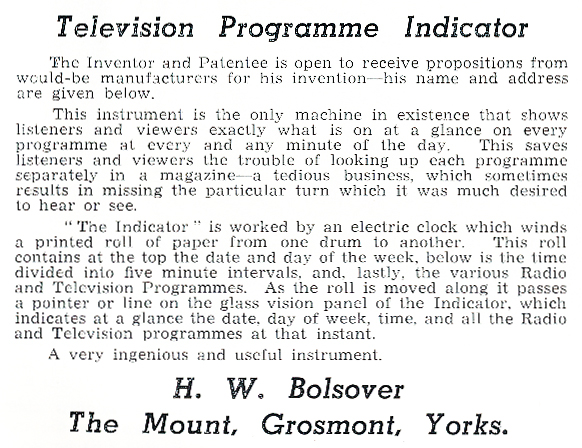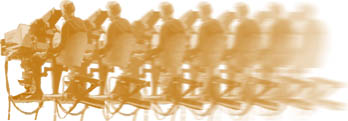Another eclectic page….
First – From John Dean
CSO
Sometime in the early sixties I was Technical Manager 2 in TC6 working on a production which included some complex colour separation overlay sequences. We were in that studio because TC6 was permanently equipped with three video switches for CSO and additional effects equipment could be brought in and rigged if required.
During rehearsal, one set-up was presenting problems despite the best efforts of the Vision Mixer, the Effects Operator and the Studio Engineers in the Vision Apparatus Room.
I left the Gallery and went back to the VAR. The Studio Engineer and his assistants were gazing at bays of equipment festooned with linking video cables and checking waveforms with an oscilloscope.
“This doesn’t seem to be working” I said to the Studio Engineer – a rather obvious remark. ” No it isn’t” he replied “It looks like we will have to use a DFA”.
This was interesting. Almost everything in BBC Television was referred to by using an acronym but I had never heard of a DFA. What on earth was it – a Digital Frame Attenuator – a Differential Field Amplifier?
I gave up. “what is a DFA?” I asked.
The Studio Engineer gave me a benign smile and said “A DFA is a different f***ing arrangement”.
TOTP
One week on TOTP I was TM2 and Richard Pigg was Vision Mixer. Richard was great company, an inspired joker and at the time was taking flying lessons.
In those days we were using the old BBC fader per channel mixer. There were two groups each with eight channels and the system was very useful for the multi camera mixes and superimpositions then in vogue on music programmes.
Each channel fader, plus the two group faders, had beside it a green light and an orange light to indicate whether that fader had a sync or non-sync input.
We were in the middle of rehearsal when the mixer developed a strange fault. It cut to black and all these lights on the mixer flashed in unison between green and orange.
Everyone in the gallery watched this in silent fascination wondering if it would stop. There were probably more lights flashing in the Gallery than on the set.
It suddenly stopped with all lights showing green and Richard yelled “eighteen wheels down and locked”. People listening to talkback must have been puzzled.
FLOOR MARKS
As a tracker on Crew 7 many years ago I was driving a Mole Crane with Mike Bond on the front. It was a large scale production of La Belle Helene by Offenbach.
As was usual I marked a tracking line on the studio floor into the main set using yellow floor marking chalk with reference points marked A B C etc. As we were tracking at times far into the set the line was long and became visible in wide shots. I must confess it was rather too obvious.
Having noticed this, the designer, Clifford Hatts, came over to me as I sat on the back of the crane and complained about this desecration of his floor paint design.
“Well” I said “we do need these reference marks”.
“I realise that” he groaned “but do they have to be quite so Wagnerian?”
++++++++++++++++++++++++++++++++++++++++++++++++++++++++
John Hulse sent this picture of an idea for an EPG
++++++++++++++++++++++++++++++++++++++++++++++++++++++++
Howard Michaels says “I found an old Daily Star newspaper from jan 29th.1982, not a paper I would normally read! Inside was an article on Jim`ll fix it and a photo of the crew with Jimmy Saville at TV theatre.I was on Peter (Squire) Hills crew at the time.You can see me near the centre complete with dark hair and moustache! On my right is Peter Hills and behind me is John Bradberry. Director Peter Campbell was on Jim`s right and producer Roger Ordish on his left. It was a lovely show to work on and everyone was very friendly.”





